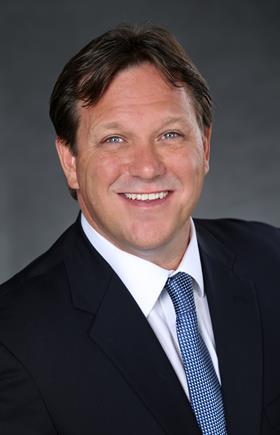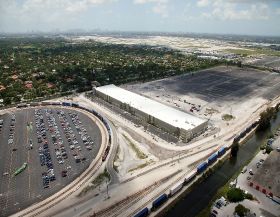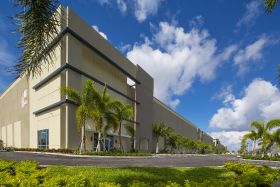
Following the recent opening of the company’s South Florida Logistics Centre, Chris Scott, president and CEO of Flagler Global Logistics, outlines his vision to establish Miami as a key port of entry for Latin American produce shipments to the US.
It's been a few months since the South Florida Logistics Centre (SFLC) opened - how has business been during that period?
Chris Scott: Every day is new and exciting. Late last year, we received USDA certification for our sustainable, eco-friendly cold chain treatment to process perishables coming through South Florida. We have closed some business deals and are in talks with numerous perishable importers and exporters interested in using our services.
The Centre has only been open since October, so our focus has been on getting the word out that we’re operational and on educating prospective clients on the truly integrated end-to-end logistic service offerings and capabilities that will support their businesses. We are changing the game on how products and perishables are transported through the Southeast. Our new cold chain process is unparalleled. We are uniquely positioned to synergise with rail, air and highways; in addition to moving product faster in and out of the country to Latin America. There are a lot of opportunities for those interested or already participating in international trade and we want them to be aware of all the possibilities here for them in South Florida.
 Now that your cold chain treatment technology has been approved by the USDA,what key Latin American and Caribbean trades are you hoping to attract?
Now that your cold chain treatment technology has been approved by the USDA,what key Latin American and Caribbean trades are you hoping to attract?
CS: We are seeing interest from citrus, grapes and asparagus producers. The facility is hoping to attract both importers and exporters. For example, a produce exporter in Chile may now realise that in his off-season he can bring produce or other items in that he can’t get at that time of year. We hope to synergise these types of opportunities so ships aren’t going back to their home countries empty.
How do you see Miami's role as a fresh produce import and distribution hub developing over the coming years?
CS: Anything that needs to come to the Southeast will benefit greatly from a port of entry in Miami as the time it takes to get to market and the cost of transportation will both be reduced.
Our location has exclusive connectivity to seaports, airports, railroads and highways, so it’s hard to find another site in the US that brings together those modes of transportation as what we have here. That’s what got us started – the uniqueness and the site location.
To what extent will the new centre affect traffic at northeastern ports like Philadelphia and Delaware? Do you think the ongoing increase in produce imports into the US means there is plenty of business to go around?
CS: We don’t view it as taking business away. It is creating a more efficient supply chain that will benefit all parties and businesses involved. We’ve created a viable way to bring products from anywhere, including Latin America, into the US.
We identified the transportation benefit, then the issue of fumigation and repackaging were addressed in order to have a full supply chain to be effective and compete with the other ports mentioned. We’ve worked hand in hand with the Port Authority, Port Everglades, Miami International Airport and others. They are all making investments in their infrastructure to plan for more goods to flow through the area.
Importers who wish to make a more efficient supply chain from Latin America will certainly think of us first.
When do you expect the centre to start operating profitably?
CS: We have some preliminary numbers that I’m not able to share. But the fact that goods moving through our facility have the potential to reach 100m people living in or traveling to the state of Florida certainly poses tremendous upside, especially in the perishables sector. With our central location and new cold chain treatment process, growers can have their products reach consumers fresher, faster and in a more cost-effective manner than ever before. It’s an exciting time for Flagler Global Logistics and our customers in the Southeast US.
 The facility is located within the recently established Miami-Dade County Foreign Trade Zone. What benefits does this location offer to produce importers?
The facility is located within the recently established Miami-Dade County Foreign Trade Zone. What benefits does this location offer to produce importers?
CS: Foreign-Trade Zone (FTZ) provides importers with significant opportunities to enhance their supply chain and add savings to their bottom line. Taking advantage of the weekly entry system will reduce processing fees. Direct delivery from the port to a users’ FTZ helps reduce clearance delays. And of course you have the duty deferral and exemption benefits that improve cash flow during inventory holding periods. At Flagler Global Logistics we have a team of experts that can guide clients through the FTZ environment to help them maximise the cost savings benefits an FTZ can bring for their supply chain.
What other key projects does Flagler Global Logistics have lined up for 2014?
CS: Expansion at the SFLC and nearby Flagler Station business park are at the top of the list. Later this quarter we will begin construction on two more buildings at the SFLC site. And development for Phase III at Flagler Station is set for later in the year.
How do you see the US market for imported fruit evolving in the coming years? What will be the key drivers of growth in your opinion?
CS: With roughly US$17bn in perishable foods wasted due to in-transit temperature changes, our new process will get more products to more people, faster. We’re talking about extending the shelf-life of a product by a week or more, and that’s a game changer.
We believe that the way we fumigate will be more environmentally friendly, fresher, faster and at a more competitive price. We hope to serve more than just the Southeast but as we move forward we can determine just how far we can reach.
More ports will take on this type of approach and the end-consumer will see the benefit with products that are fresher and less expensive.



